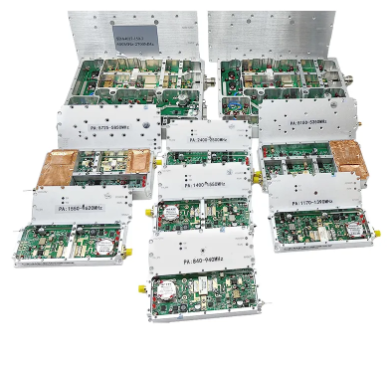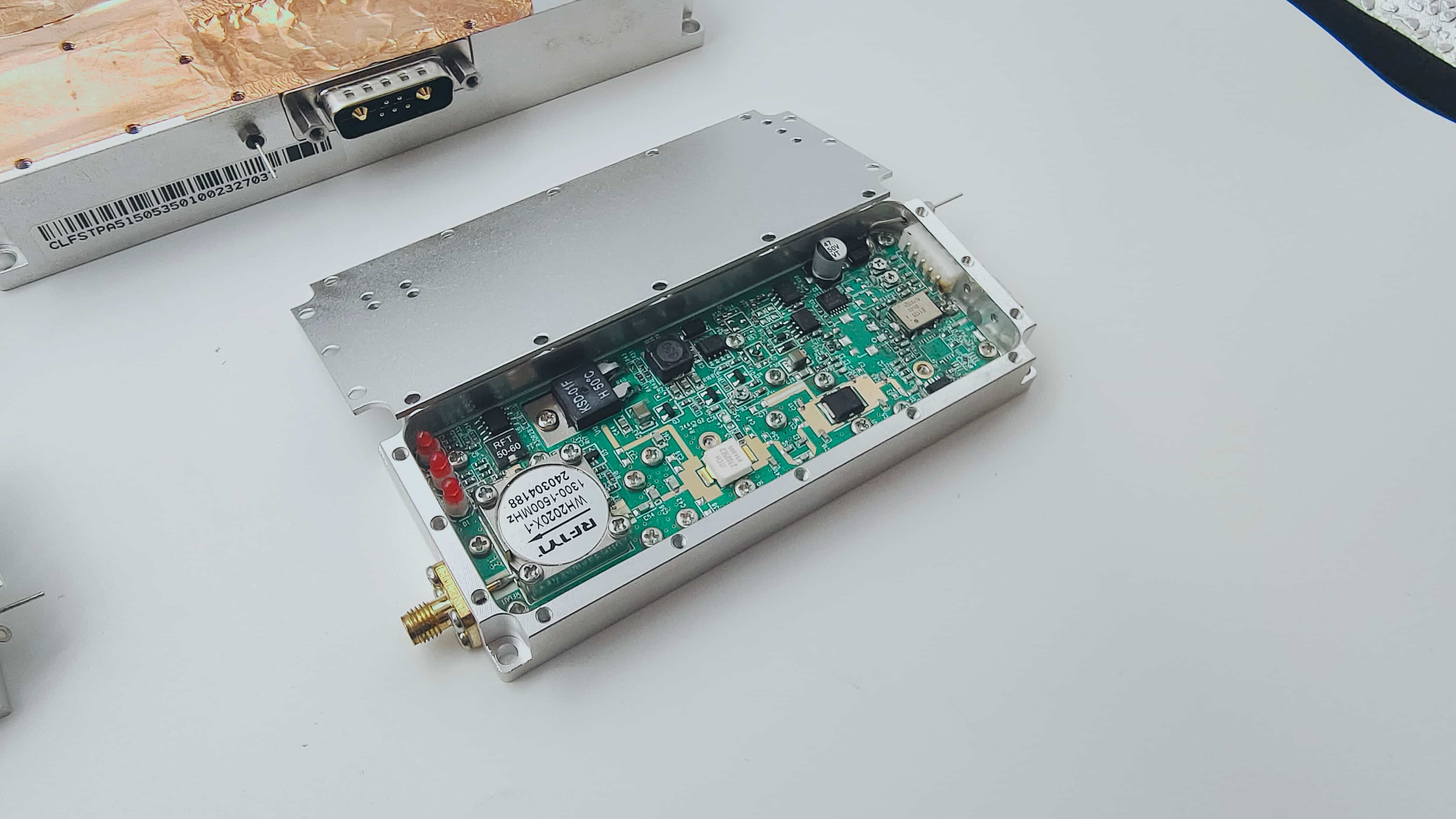What Factors Should Be Considered When Selecting an RF Wireless Module for a Specific Application?
Choosing the right RF wireless module is critical for ensuring your device works reliably, efficiently, and within budget. Whether you’re building a smart home sensor, industrial monitor, or medical device, the module’s performance depends on how well it fits your application’s needs. Let’s break down the key factors to consider when selecting an RF wireless module.
1. Data Rate Requirements
The amount of data your device needs to send—and how quickly—directly impacts the RF wireless module you choose.
- Low data rate: For simple devices (like temperature sensors or smart meters) that send small, infrequent data packets (a few bytes at a time), a low-data-rate RF wireless module works best. Technologies like LoRa or NB-IoT are ideal here, as they use less power and focus on long range over speed.
- High data rate: For devices that transmit large amounts of data (video cameras, real-time industrial controls), you need a high-data-rate module. Options like Wi-Fi (802.11) or Bluetooth 5.0 can handle megabytes per second, ensuring smooth video or fast command transfers.
Mismatching data rate to your needs wastes energy: a high-data-rate module uses more power than necessary for a simple sensor, while a low-data-rate module will lag with video.
2. Transmission Range
How far your device needs to send data—from a few feet to several miles—dictates the RF wireless module’s range capabilities.
- Short range (up to 300 feet): For devices close to each other (smartphones to speakers, or home sensors to a hub), short-range modules like Bluetooth or Zigbee work. They’re low-power and easy to integrate.
- Medium range (300 feet to 1 mile): For larger spaces (warehouses, offices), modules using Wi-Fi or sub-GHz (900 MHz) frequencies work well. Sub-GHz signals penetrate walls better than higher frequencies, making them reliable in buildings.
- Long range (1+ miles): For remote devices (farm sensors, outdoor security cameras), long-range RF wireless modules like LoRa or Sigfox are better. They can transmit over miles in open areas, even with low power.
Always test range in your actual environment (with walls, trees, or machinery) since obstacles reduce effective distance.
3. Power Consumption and Battery Life
If your device runs on batteries (most IoT or portable devices do), the RF wireless module’s power use is critical.
- Battery-powered devices: Choose a low-power RF wireless module with features like “sleep mode,” where the module shuts down when not transmitting. Modules using LoRa or NB-IoT can last 5–10 years on a single AA battery, making them perfect for remote sensors.
- Plug-in devices: For devices with constant power (home hubs, industrial controllers), power consumption matters less. You can use higher-power modules (like Wi-Fi) that offer faster data rates, even if they use more energy.

Check the module’s datasheet for “active current” (power used when transmitting) and “sleep current” (power used when idle). Lower numbers mean longer battery life.
4. Environmental Conditions
The environment where your device operates affects the RF wireless module’s performance and durability.
- Obstacles and interference: If your device is in a busy area (cities, factories) with walls, metal, or other electronics, choose an RF wireless module with strong anti-interference features. Modules with frequency hopping (like Bluetooth) or beamforming can avoid interference from other signals. For devices in concrete buildings, sub-GHz modules (900 MHz) penetrate obstacles better than higher frequencies (2.4 GHz).
- Temperature and weather: Outdoor devices (agricultural sensors, weather stations) need modules rated for extreme temperatures (-40°C to 85°C) and moisture resistance. Industrial-grade RF wireless modules often have rugged casings to handle dust, rain, or vibrations.
- Electromagnetic interference (EMI): In factories with motors or heavy machinery, EMI can disrupt signals. Look for modules with shielding or robust filtering to maintain connections in noisy environments.
5. Frequency Band and Regional Regulations
RF wireless modules use specific frequency bands, which are regulated by governments. Using an unapproved band can lead to legal issues or signal interference.
- Global vs. regional bands: Some bands (like 2.4 GHz) are unlicensed and used worldwide, making them good for international products. Others are region-specific: for example, 915 MHz is common in North America, while 868 MHz is used in Europe. Choose an RF wireless module that supports the bands approved in your target market.
- Licensed vs. unlicensed bands: Unlicensed bands (like 2.4 GHz, 915 MHz) are free to use but can get crowded. Licensed bands offer exclusive access (less interference) but require government approval and fees—good for critical applications (emergency services, military).
Always check certifications (FCC for the US, CE for Europe) to ensure the RF wireless module meets local regulations.
6. Range and Coverage Needs
How far your device needs to communicate— and whether it’s in a fixed or mobile setting—shapes your choice.
- Point-to-point communication: For devices that talk directly to a single hub (a smart lock to a home controller), a short-to-medium range RF wireless module (Bluetooth, Zigbee) works. Ensure the module’s range exceeds the maximum distance between the device and hub (add 30% to account for obstacles).
- Wide-area coverage: For devices spread out over large areas (farm sensors, city-wide parking meters), a long-range module (LoRa, NB-IoT) with wide-area network (WAN) support is better. These modules connect to existing WANs (like cellular networks) to cover miles without needing a local hub.
- Mesh networking: If your devices need to relay data to each other (a network of factory sensors), choose an RF wireless module that supports mesh networking. Modules using Zigbee or Thread can pass data from one device to another, extending coverage beyond a single module’s range.
7. Security Features
If your device transmits sensitive data (medical records, financial info, or industrial controls), the RF wireless module must protect against hacking or interception.
- Encryption: Look for modules with built-in encryption (AES-128 or higher) to scramble data during transmission. This ensures only the intended receiver can read the information.
- Authentication: Modules with secure authentication (like unique device IDs or password protection) prevent unauthorized devices from joining the network. This is critical for smart locks or industrial systems where access control is key.
- Tamper resistance: Some RF wireless modules detect physical tampering (like opening the device) and shut down or encrypt data to prevent misuse. This is useful for high-security applications (banking terminals, government devices).
8. Size, Integration, and Cost
The module’s physical size, ease of integration, and cost must fit your project’s constraints.
- Size: Small devices (wearables, hearing aids) need compact RF wireless modules (as small as 10x10mm). Larger modules (with extra features like antennas) work for industrial equipment but may not fit in tiny gadgets.
- Integration: Choose a module with easy-to-use development tools (SDKs, code examples) to speed up setup. Modules with pre-certified hardware (like FCC or CE) save time, as you won’t need to redo compliance testing.
- Cost: Balance features with budget. Basic RF wireless modules (for simple sensors) cost $5–$20, while high-performance modules (with security, long range, or high data rates) can cost $50+. Factor in long-term costs too: a slightly pricier low-power module may save money on batteries over time.
9. Reliability and Latency
For time-sensitive applications (real-time controls, emergency alerts), the RF wireless module’s reliability and response time (latency) are critical.
- Low latency: Devices like industrial robots or remote surgery tools need modules with low latency (under 100ms) to ensure commands are acted on immediately. Technologies like Wi-Fi 6 or Bluetooth 5.2 offer fast response times.
- High reliability: Modules with error-correction features (like retransmitting lost data) are better for applications where data loss is costly (weather monitoring, medical devices). Look for modules with high “link budget” (a measure of signal strength), which indicates better reliability in weak signal areas.
FAQ
How do I balance range and power consumption in an RF wireless module?
Prioritize low-power technologies (LoRa, NB-IoT) for long-range, low-data applications. For short-range needs, Bluetooth or Zigbee offer good power efficiency. If you need both range and speed, consider a module with adjustable power modes (low for idle, high for transmission).
What’s the difference between licensed and unlicensed frequency bands?
Unlicensed bands (2.4 GHz, 915 MHz) are free to use but can get crowded. Licensed bands (like cellular) offer exclusive access (less interference) but require fees and government approval.
Can I use the same RF wireless module for global applications?
Yes, if it supports global unlicensed bands (2.4 GHz). For region-specific bands (like 868 MHz in Europe vs. 915 MHz in the US), choose a multi-band module that switches frequencies based on location.
How important is antenna design for an RF wireless module?
Very important. A poor antenna can reduce range by 50% or more. Choose a module with a built-in antenna (for simplicity) or a connector for an external antenna (for better performance in challenging environments).
What happens if I choose an RF wireless module without proper certification?
Using an uncertified module can lead to fines, and the device may be blocked from sale. It can also cause interference with other devices, leading to unreliable performance. Always select modules with certifications for your target market (FCC, CE, etc.).
Table of Contents
- 1. Data Rate Requirements
- 2. Transmission Range
- 3. Power Consumption and Battery Life
- 4. Environmental Conditions
- 5. Frequency Band and Regional Regulations
- 6. Range and Coverage Needs
- 7. Security Features
- 8. Size, Integration, and Cost
- 9. Reliability and Latency
-
FAQ
- How do I balance range and power consumption in an RF wireless module?
- What’s the difference between licensed and unlicensed frequency bands?
- Can I use the same RF wireless module for global applications?
- How important is antenna design for an RF wireless module?
- What happens if I choose an RF wireless module without proper certification?

 EN
EN






